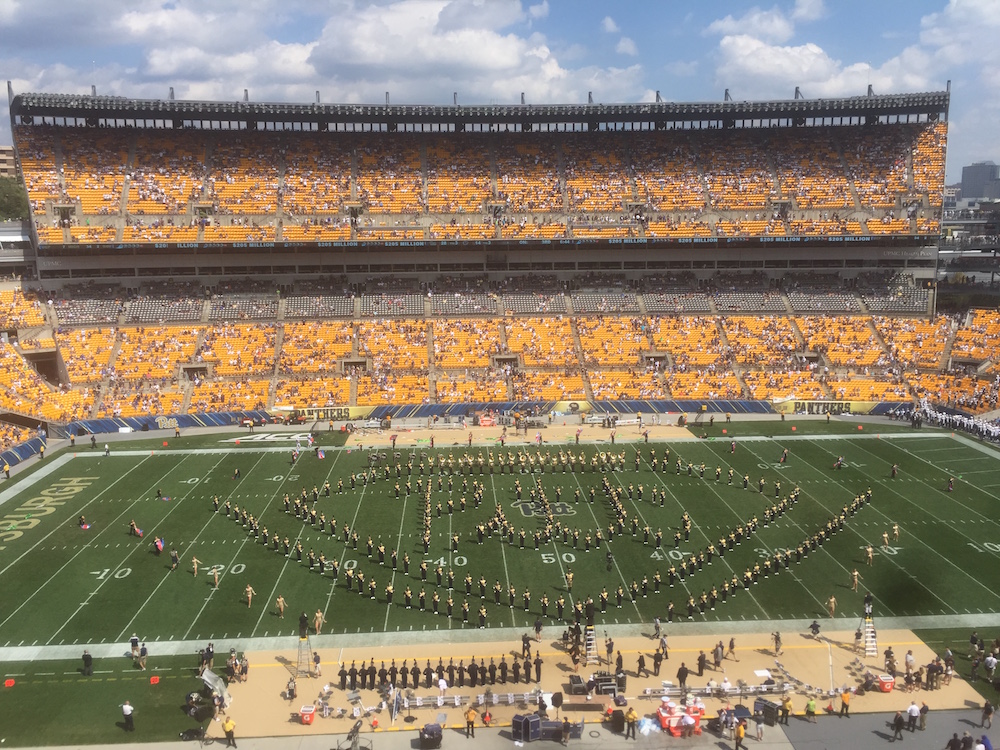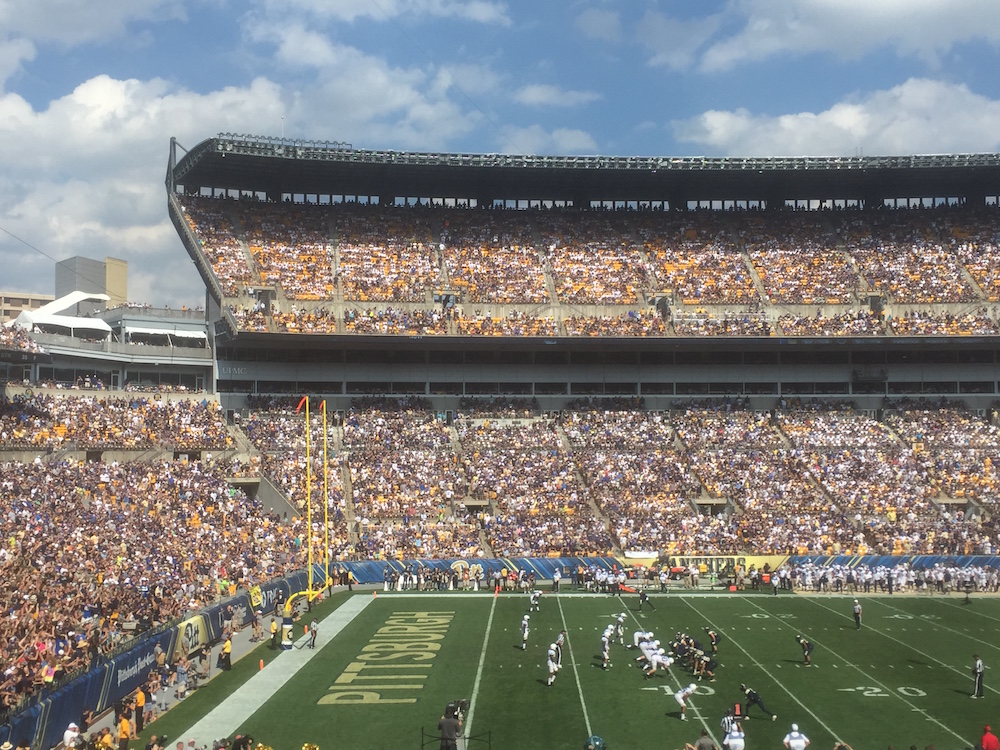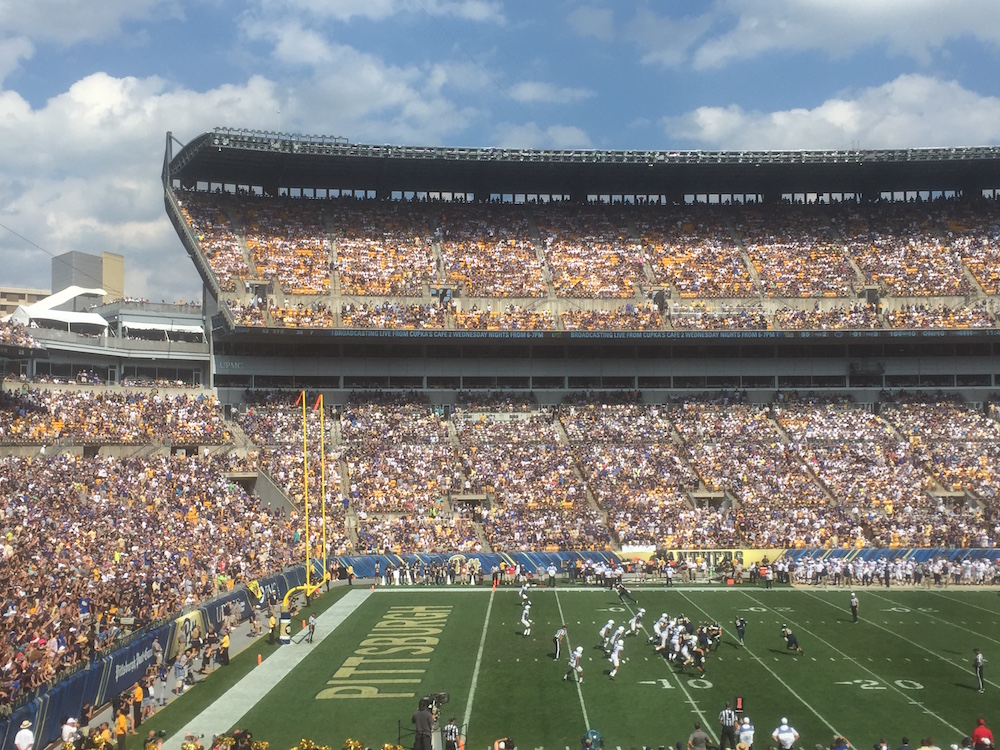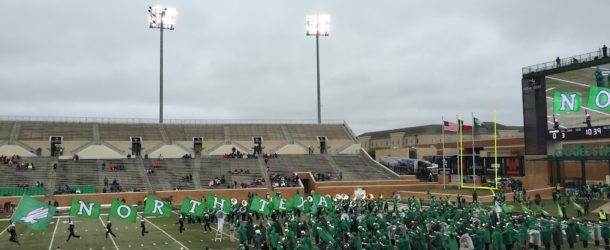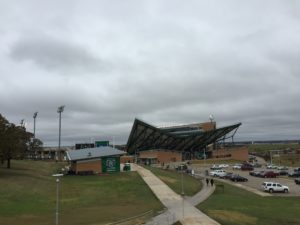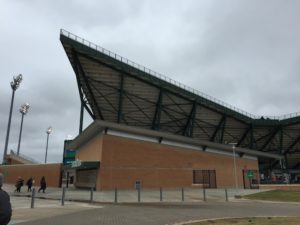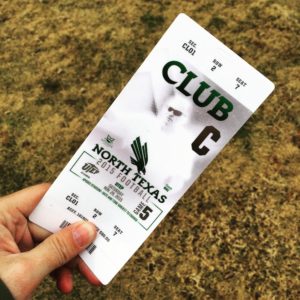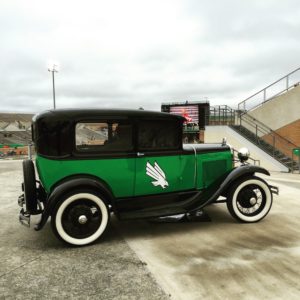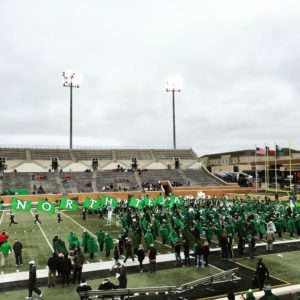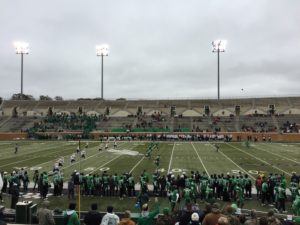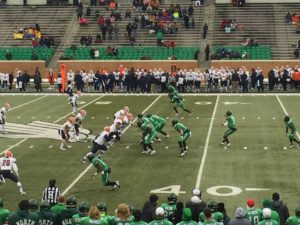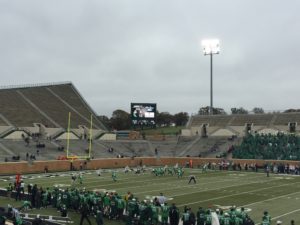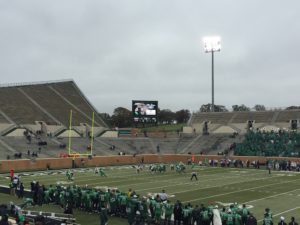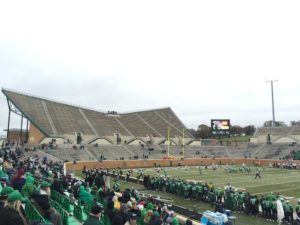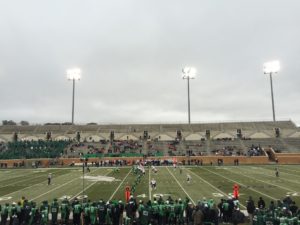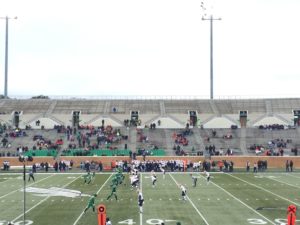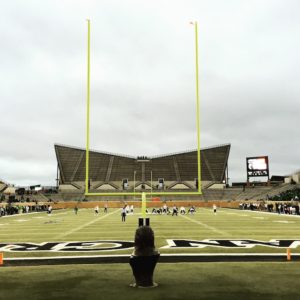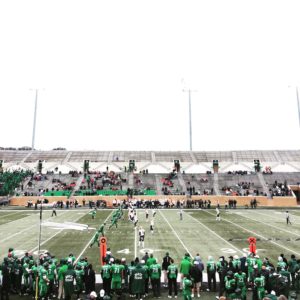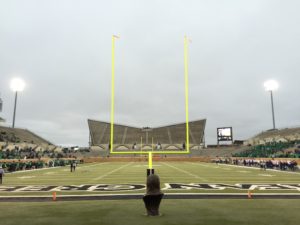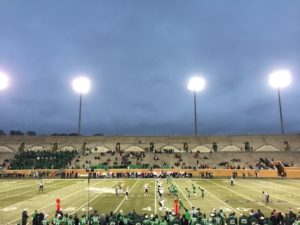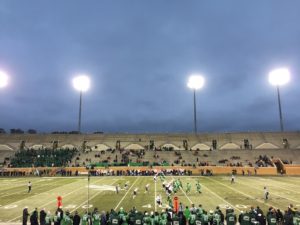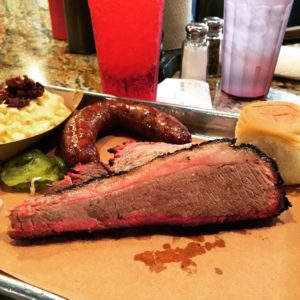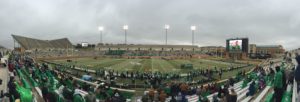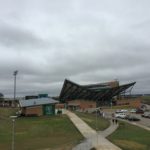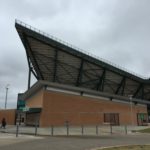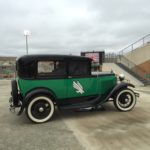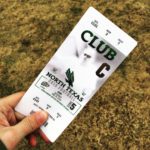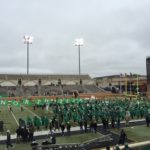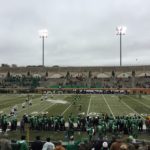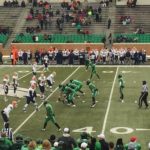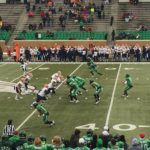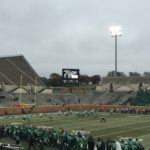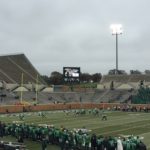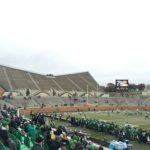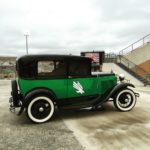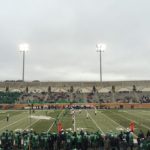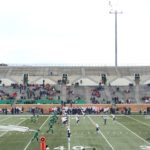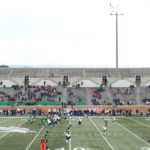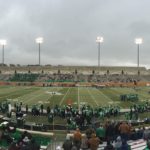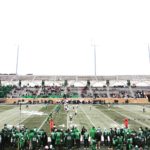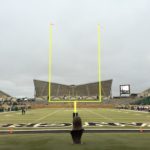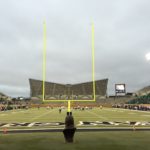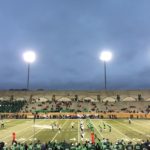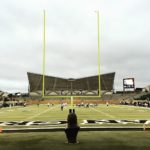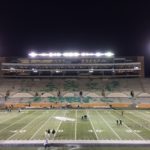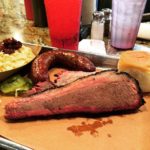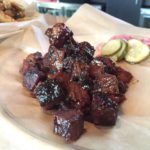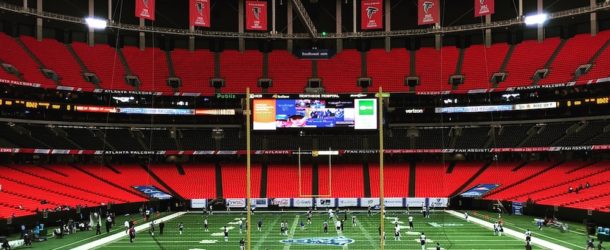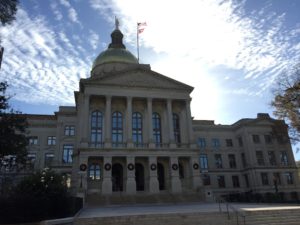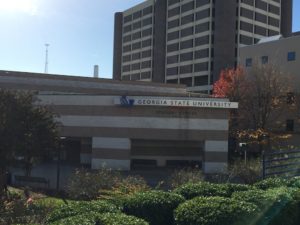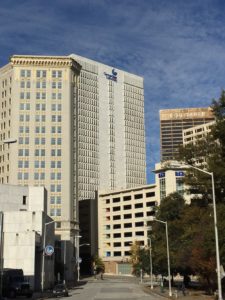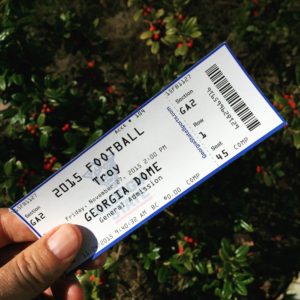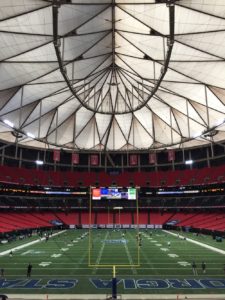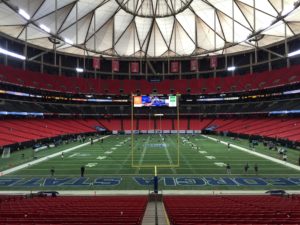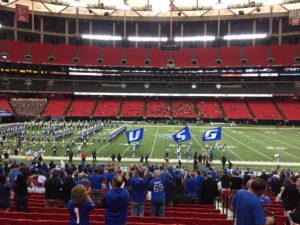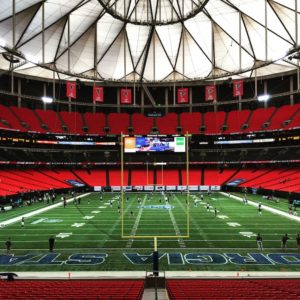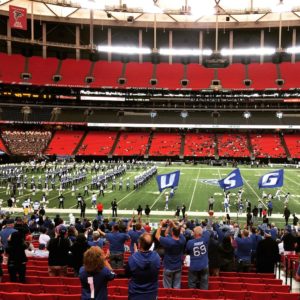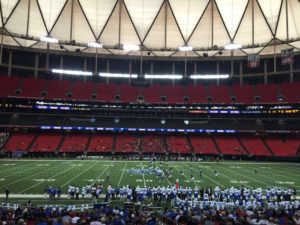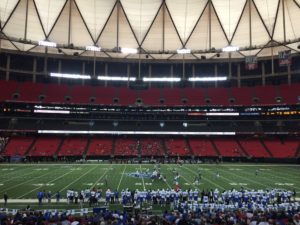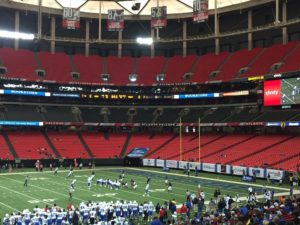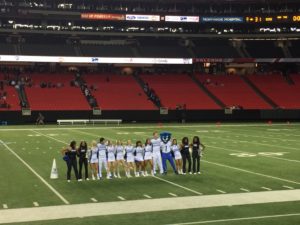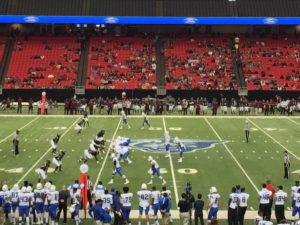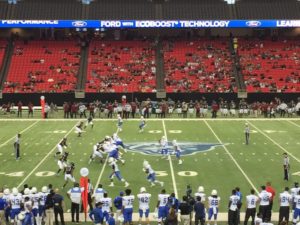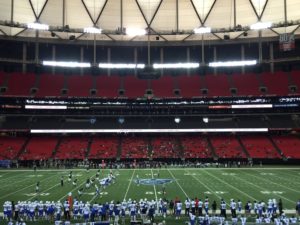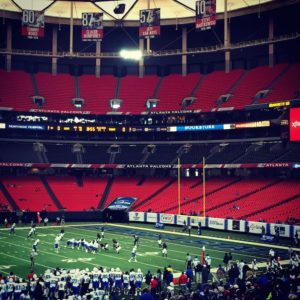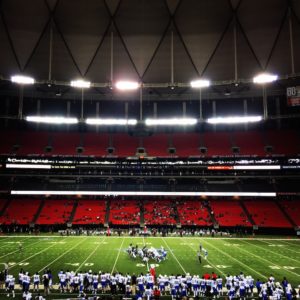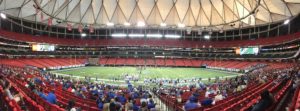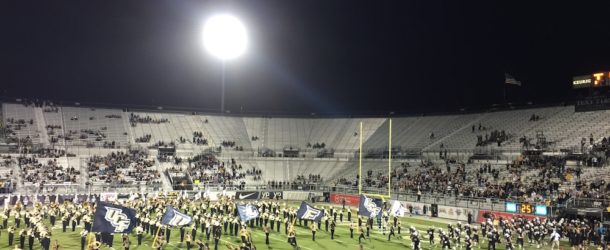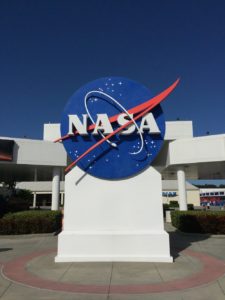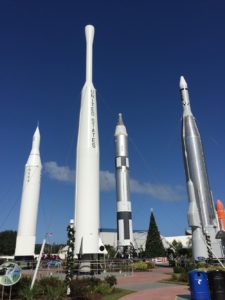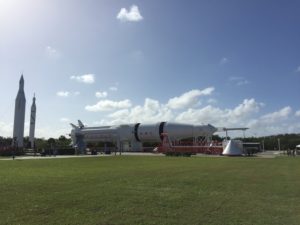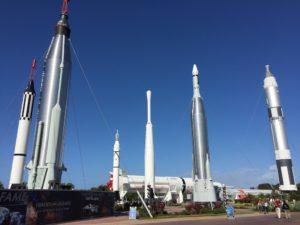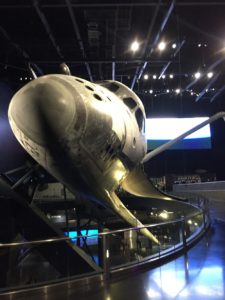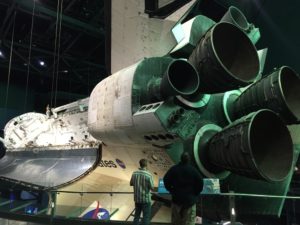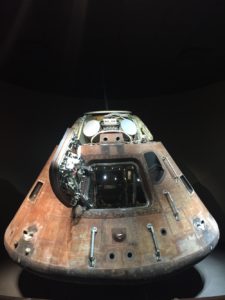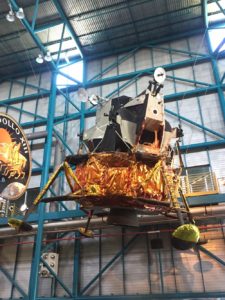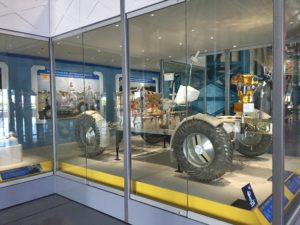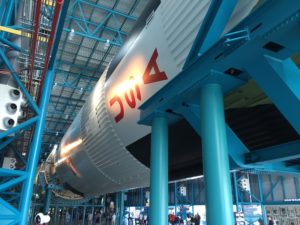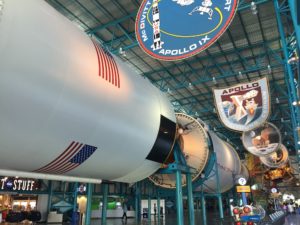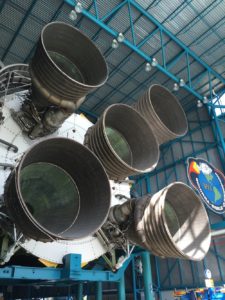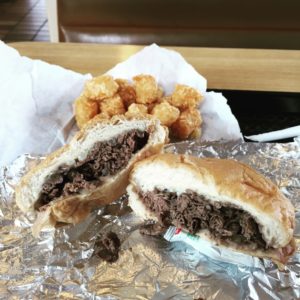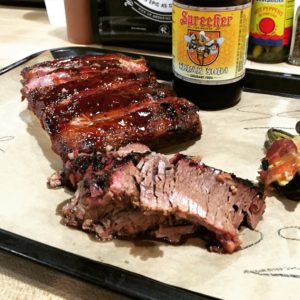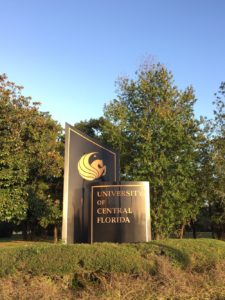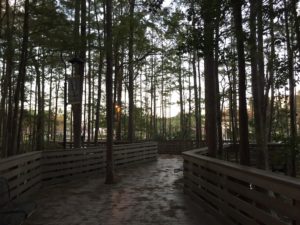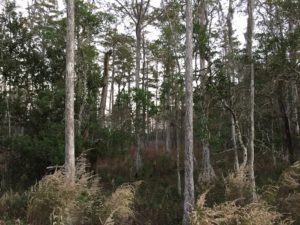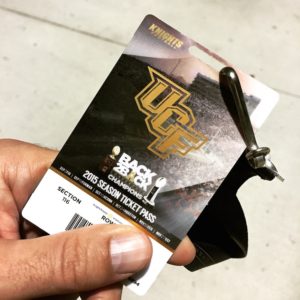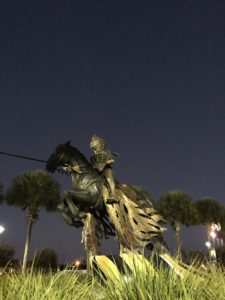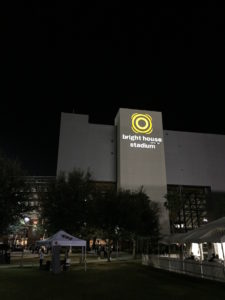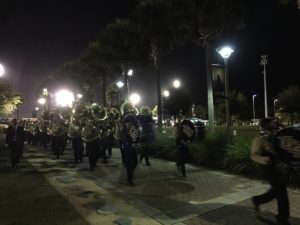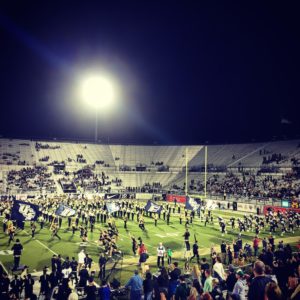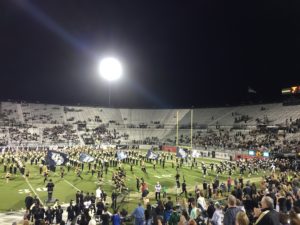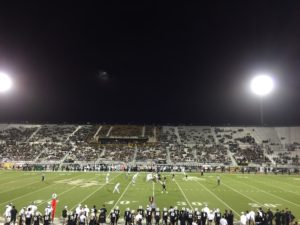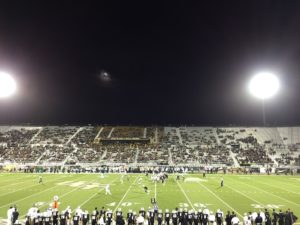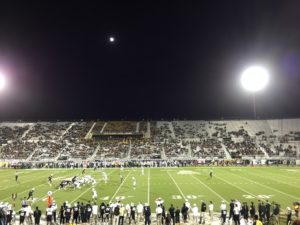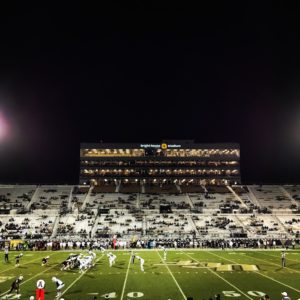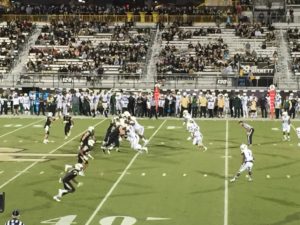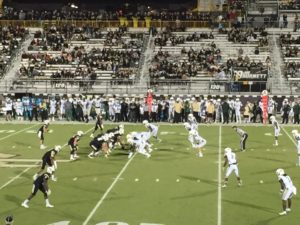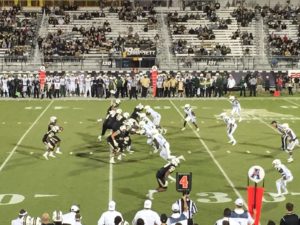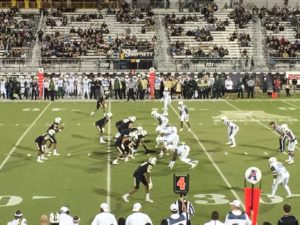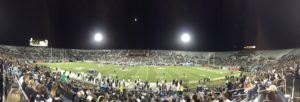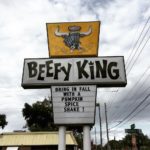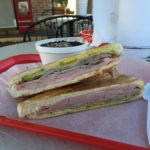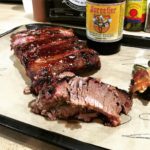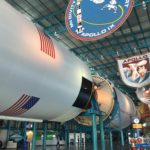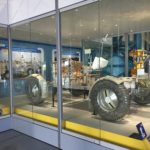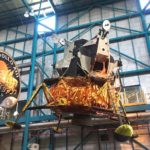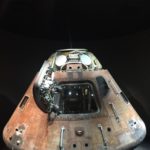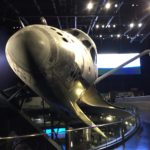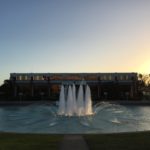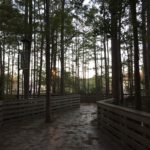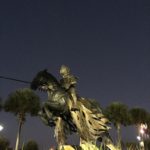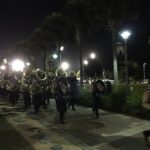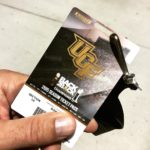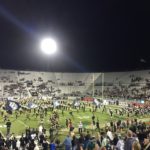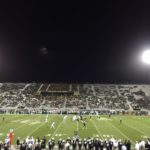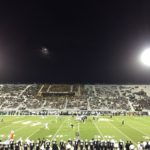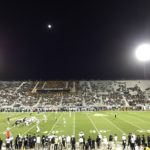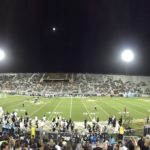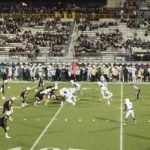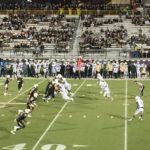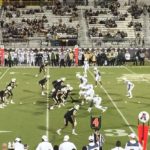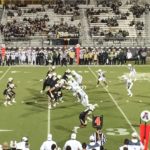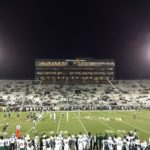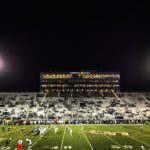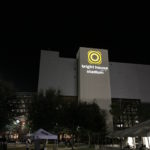As August winds to a close, and September kicks off another fall of college football, my travel plans are once again in limbo. While living in France certainly has its advantages for my gastronomic intake, getting back across the Atlantic for football games is a much trickier endeavor. Despite the EuroCup 2016 being hosted in Paris, soccer doesn’t quite satisfy the football fix, and I had been hankering all summer for the fall gridiron season to get underway. A fortuitous work trip would bring me to New York for the second weekend of the 2016 college football season, and I immediately began scouring schedules for new territory to explore along the eastern seaboard.
A curious two state doubleheader presented itself when I noticed the University of Pittsburgh had a noon kickoff against hated in-state rival Penn State, while over the border in Ohio, the Kent State Golden Flashes had a 6pm showdown of their own against North Carolina A&T. With only a 90 minute drive separating the two schools, timings would be tight, but the logistics worked, and a full fall Saturday of gridiron adventure was on the agenda.
Hot off a 10 hour plane ride and into a rental Chevy Malibu at Pittsburgh International Airport, I place a last ditch phone call to Josza’s Corner to see if they have any availability for dinner. Dishing out traditional Hungarian fare since 1988, the humble restaurant is appointment only on Friday nights. Fortunately, a gruff voice on the other end of the line tells me he’s got a spot open, and I speed towards the Hazelwood neighborhood for dinner.
Pulling open the rickety screen door of Josza’s, the entrance is through the kitchen, as aluminum pots bubble on the stove and the aroma of paprika and cabbage wafts through the humid night air. Alex, the owner, greets me with a hearty hello, extends a firm handshake, and makes small talk in a thick central European accent. A Hungarian immigrant, Alex came to the United States in 1957 at the age of 14 after escaping the Hungarian Revolution. The Revolution, a 1956 revolt against the Soviet imposed communist government of Hungary was, eventually, bloodily quashed (and the country put back under the thumb of the USSR), but not before nearly 200,000 refugees fled the country – Alex among them.
After a quick hello, he leads me into the back room for seating. A few large tables are set up in the dining room, and arranged with vinyl table cloths and a stack of paper napkins. The china is Styrofoam plates and plastic utensils, and the drink menu is BYOB. A few black and white photographs hang from the walls, old magazines, books and newspapers are stacked up in the corners along with other assorted knick knacks, and a heavy tube television sits on an end table next to a dark oak upright piano. The entire space feels like your grandmothers living room when the furniture has been cleared out for Thanksgiving dinner and folding tables and chairs have been set up in its place. One cannot help being charmed by the homeyness of it all.



In the cozy restaurant, Alex acts as both cook and waitstaff. It’s a pre-fix menu on Friday nights, and he brings the dinner out in 6-7 courses, laid onto the table in colorful casserole dishes that look borrowed from that same Grandmothers kitchen. Mushroom parprikash and scratch made Hungarian peasant bread start the affair, among other central European nibblers spread across the table. They’re followed by a brilliant Transylvanian goulash – a succulent crimson pork stew garnished with a dollop of fresh cream. Everything is served family style here, placed in the center of the table and passed around from one person to the next among conversation and laughter. It costs twenty five bucks for the entire meal (cash only), not a bargain, but a reasonable price for one of the most unique dining experiences I’ve encountered on my escapades.



****
Rising early on Saturday morning, the skies are a perfect blue, and the anticipation of another season of college football hangs in the air. I take a quick breakfast at Pamela’s Diner, located in the Oakland neighborhood of Pittsburgh. If it’s one thing I miss in France, it’s a proper breakfast. For a culture that (rightly) prides itself on its cuisine, breakfast in France is abysmal. Based on observation, a typical French breakfast essentially consists of a cup of coffee and three cigarettes. So when visiting the states, I need my fix of American style breakfast. A heaping plate of corned beef hash and eggs at Pamela’s satisfies that urge quite nicely.
Even at 8 in the morning, the sidewalks are already bursting with Pitt fans, many of them outfitted with snickeringly inappropriate t-shirts bearing slogans like “Joe Pa knew”. Near the William Pitt Student Union, a large bronze Panther statue sits menacingly out front. Its form uncannily similar to the Nittany Lion statue at Penn State, I can’t help but wonder if public universities in Pennsylvania got a 2 for 1 discount on statues of large predatory cats…

Statues aside, the University of Pittsburgh, is one of the more picturesque urban campuses that I have seen. Sprawling green lawns surround the goliath Cathedral of Learning, which, at 535 feet, is the tallest educational building in the Western Hemisphere. A magnificent 42 story tower of granite, the building looms gallantly over the surrounding neighborhood, the icon of the Pitt campus.


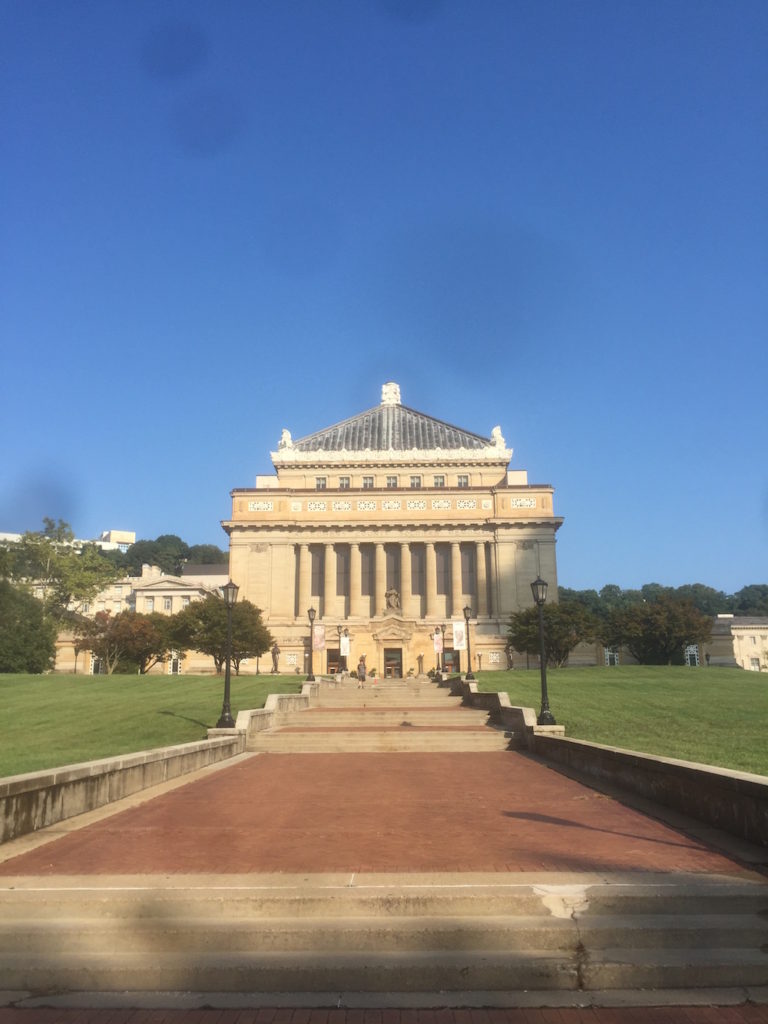
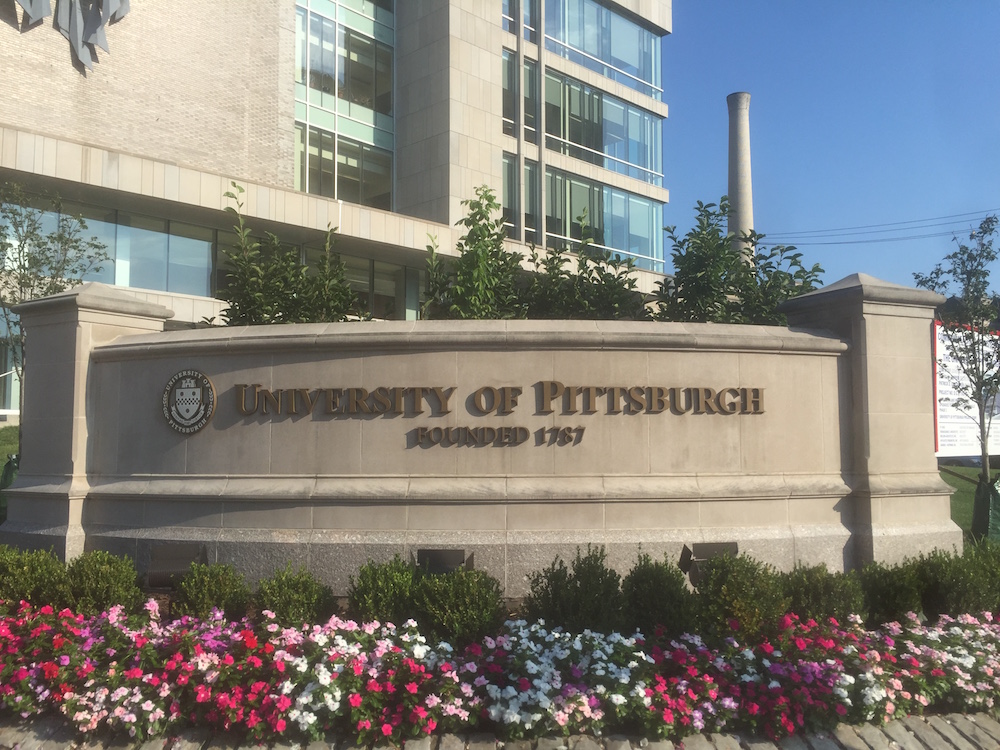

A few steps up the road the imposing granite columns of the Soldiers and Sailors Memorial building flank one side of 5th Avenue, while a mob of bloodshot eyed students congregates on the other. In front of the Student Union, a line backs up with hundreds of young scholars garbed in navy or yellow, all waiting to board school busses that shuttle them down to Heinz Field. For an early morning kickoff, the student turnout is impressive.
In lieu of a bus ride, I drive over to the stadium, strategically positioning my getaway car for a quick escape to Kent State after the game. An attendant waving an orange flag beckons me behind a line of cars into one of the ripoff lots for $50. But I drive past him with a smirk, sliding into an easy free street parking space only 50 feet further down the road on the corner of Fontella and Sheffield Streets.
Those familiar with the blog already know my general disdain for NFL stadiums, but approaching Heinz Field, the atmosphere feels noticeably different than the other lifeless beasts that populate the professional ranks. The stadium here is located near the center of town, not on the outskirts, and appears to have an active neighborhood surrounding it. Additionally, the setting for the stadium is, quite simply, breathtaking. Located along the banks of the confluence of the Allegheny and Monongahela Rivers, the backdrop of the stadium offers a panoramic view of the great steel bridges and towering skyscrapers that jut into the Pittsburgh skyline, the fountains of Point State Park throwing plumes of mist into the hazy morning air.
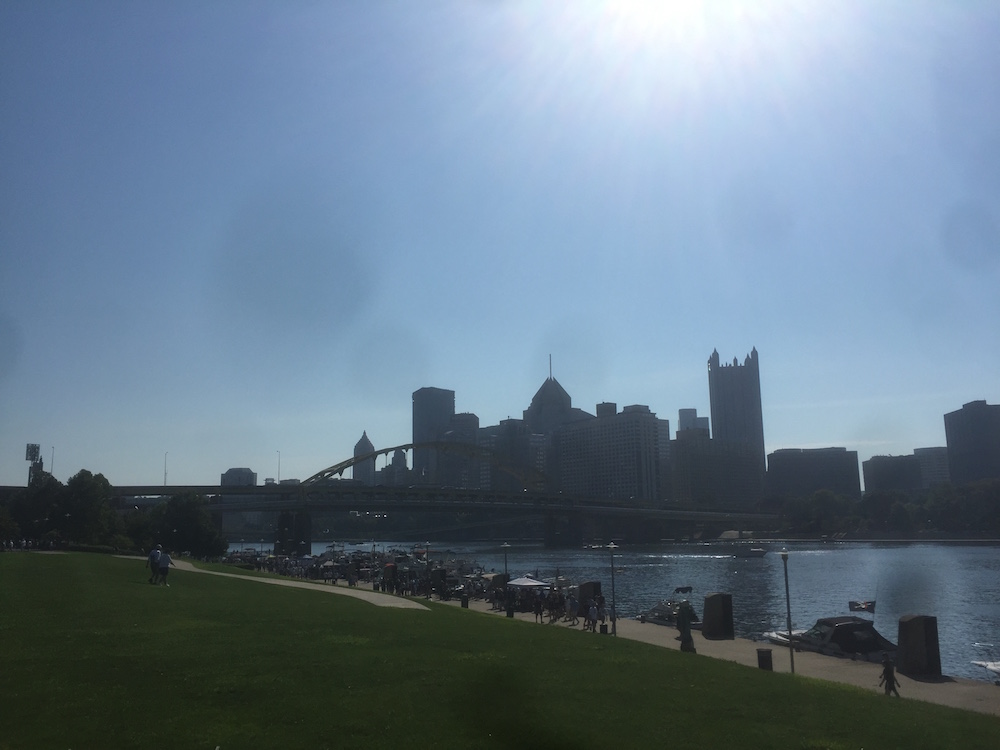


Tailgating surrounds Heinz Field on three sides, the asphalt lots already scorching in the morning sun. There’s a mix of Pitt tents and Steelers tents, the aroma of grilled polish sausages and browning onions hovers in the air while local ‘yinzers loyally clutch cans of Yuengling or Iron City beer. There’s a unique sense of pride to the city of Pittsburgh and its inhabitants, uncommonly strong among American cities. It has an identity. A brand. It even has its own dialect, a more subtle and less known brogue than, say, Boston, but a speech inflection and lexicon unique to Pittsburghese. And despite the “Steel City’s” modern evolution into a hub for technology, bio tech, and healthcare, a certain reverence for the industrial, blue collar heritage that, quite literally, forged the backbone of the city is still alive and well here.


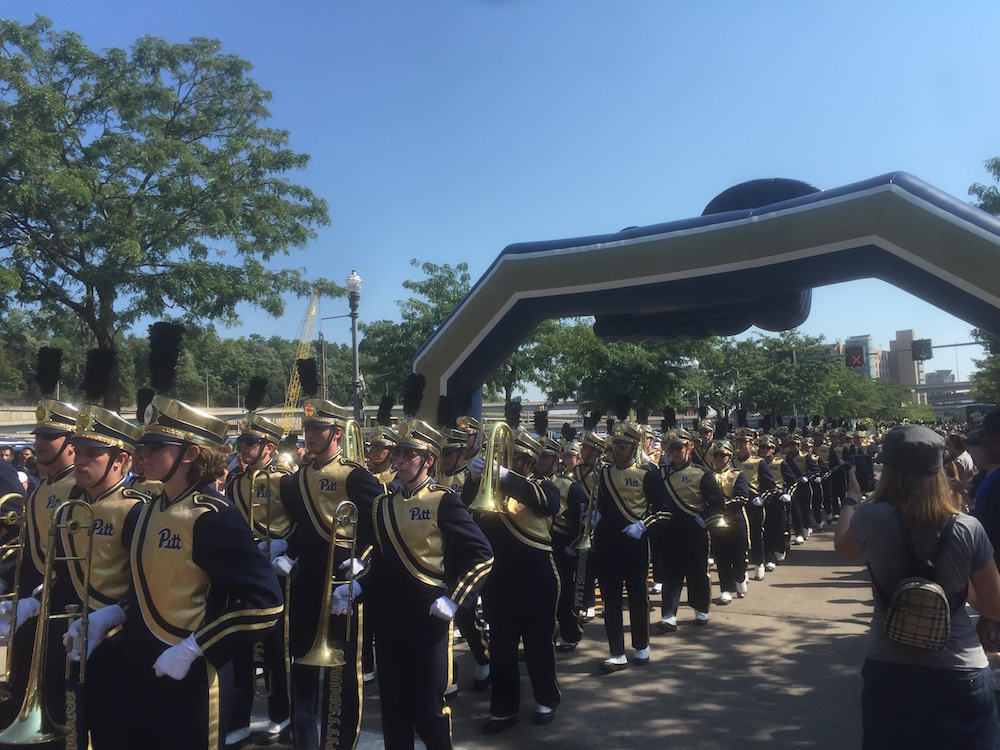
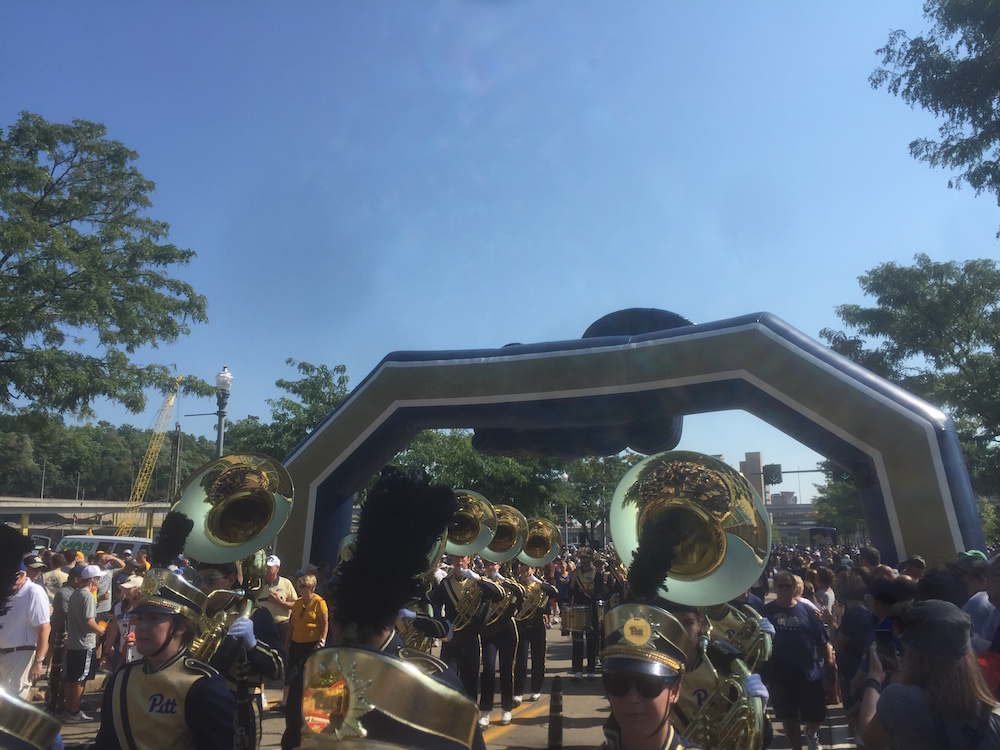
I circle the stadium on the hunt for tickets, which are far more scarce than I expected for a Pitt game, but hardly surprising with a big interstate rival in town driving up demand. Bypassing the scalpers, who are having a field day ripping off the naïve at $150 for nosebleeds, I spot a grizzled yinzer outside the gates with a lone single ticket raised in the air. The seat is choice – twenty rows up on the forty yard line.
“How much?” I ask, flashing a friendly smile.
“Two fifty.” He responds, without a hint of sarcasm.
I audibly chuckle, and then search his sunburnt face like a poker player, looking for the slightest crease of a smile or gleam of the eye. Any tic that might spoil his façade, the lump in the throat that forms when he realizes he’s overplayed his hand. The point when real negotiation begins….
I get nothing. Stone. This man is seriously asking for $250 for a Pittsburgh football ticket. He’s not playing poker, or hardball, he’s delusional. He genuinely believes that is the value of a Pittsburgh football ticket. For reference, $250 is approximately the same cost that I paid to see the BCS National Championship game in 2009 at the Rose Bowl – a game featuring Texas and Alabama. I certainly won’t be forking over that kind of cash for two unranked teams in the middle of western Pennsylvania.
“Haha, yeah…. how about forty?” I respond with a laugh, knowing full well we’ll never come close to an agreement. In the words of the Captain from Cool Hand Luke “some men, you just can’t reach”. So I simply want to dent his ego a bit. Perhaps soften him up for the next dupe.
Around the corner an older woman dressed in full Pitt gear sees my lone finger raised in the air and we settle on a deal of $60, less than face value, for a second deck seat on the 40 yard line. With the mercury topping well over 90 degrees, hopefully the grandstands will offer a bit of shade from the UV beat down on this searing afternoon. I buy a stadium soda for $8.50 to stay hydrated, before settling into my seat before kickoff. The crowd roars in anticipation for an early afternoon tilt, and though most NFL venues feel subdued and dead during college games, Heinz Field feels refreshingly alive and electric on a Saturday.
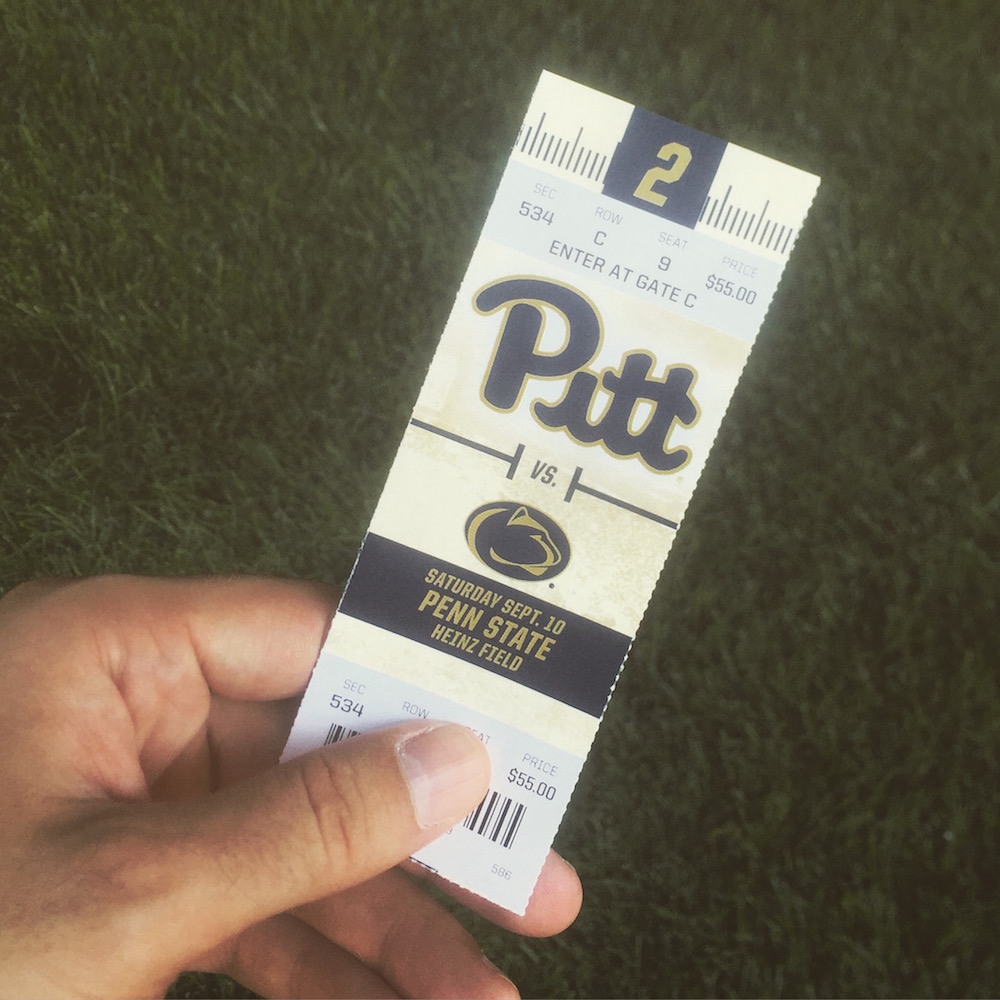
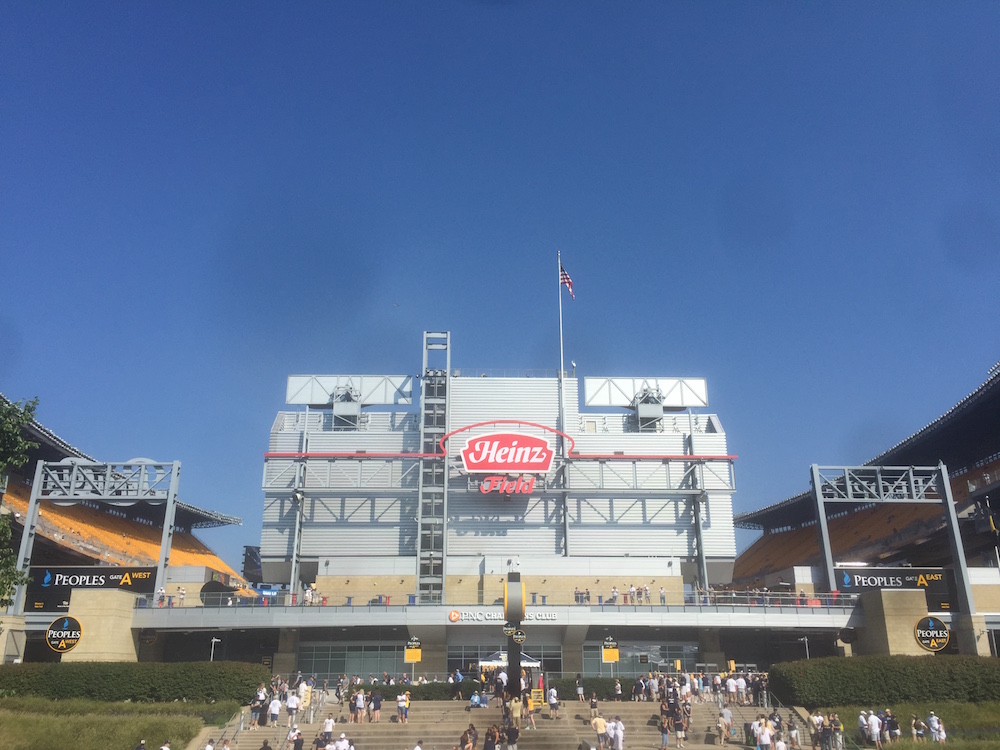
The game that unfolds is an excellent one that delivers on the pre-game hype, as the formerly great rivalry between Penn State and Pitt is rekindled with fervor. While Pitt jumps out to an early lead, they never quite seal the game – leaving the door open late for Penn State to edge their way back into it. Led by a star in the making – running back Saquon Barkley – the Penn State rusher punches in five touchdowns on the day, and will clearly be a name to watch. But in the end, his efforts fall short. Late in the fourth quarter with only two minutes remaining, and the Nittany Lions driving deep into Pitt territory, quarterback Trace McSorely fires an untimely interception. The Panthers pounce on the opportunity, and are able to run out the clock to skate away with a narrow victory 42-39.
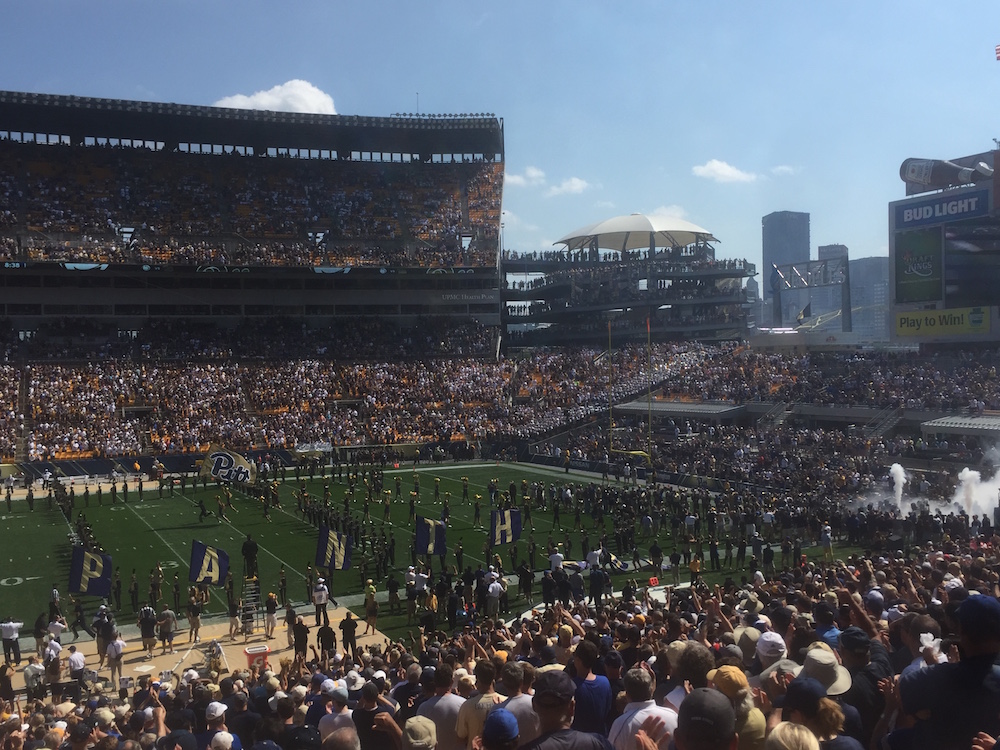

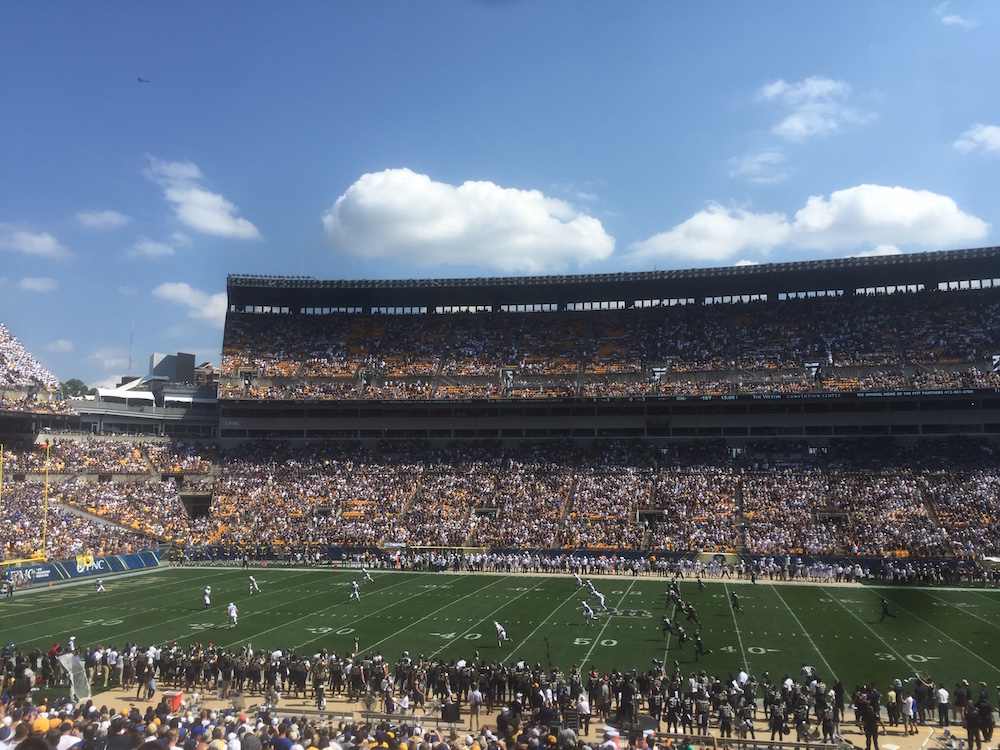
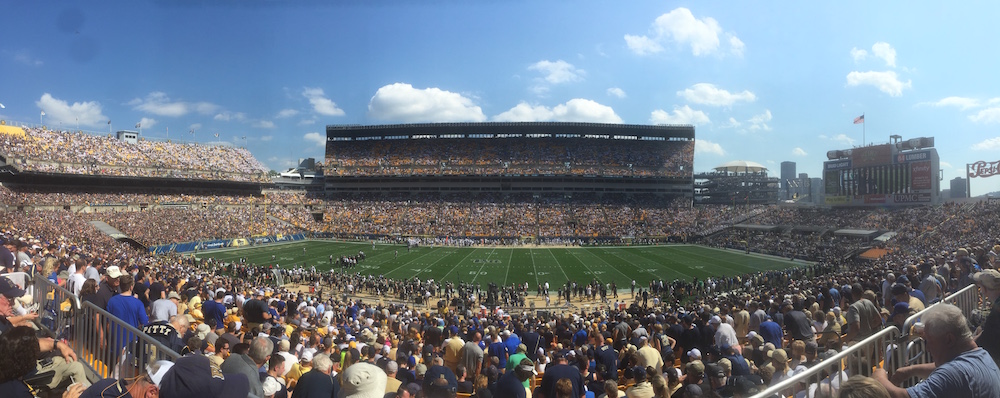
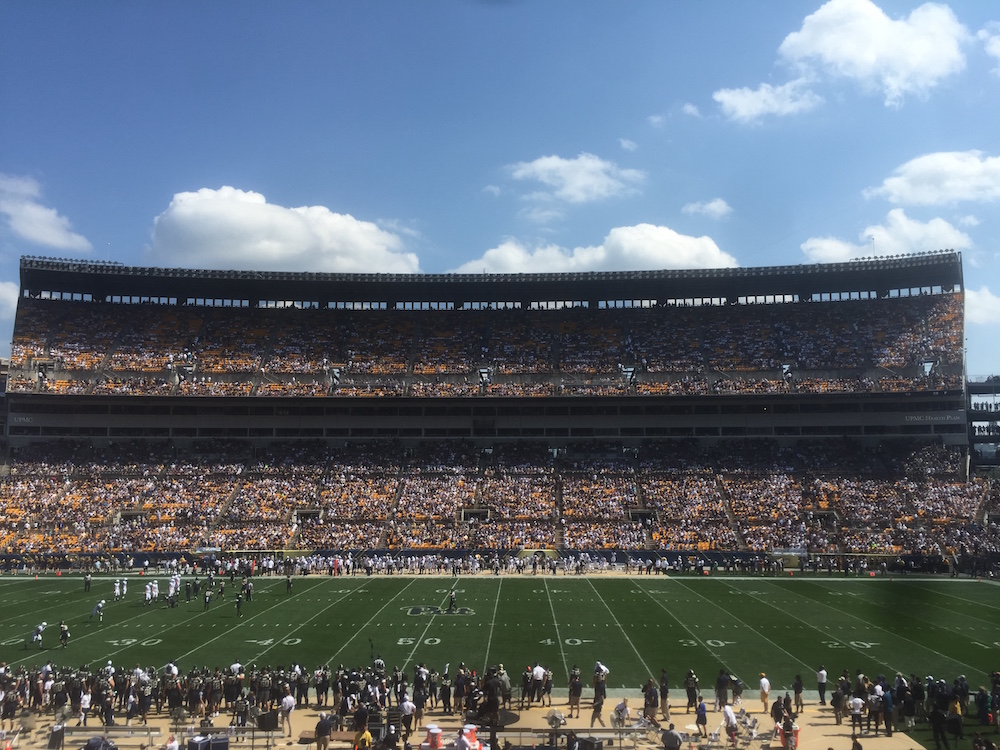
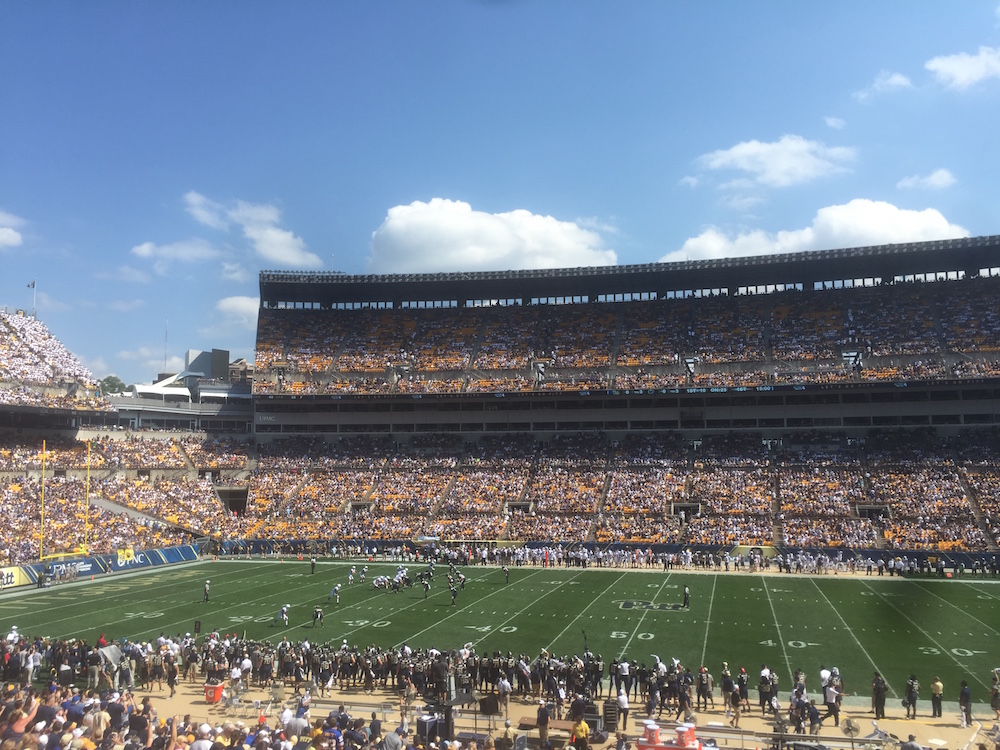
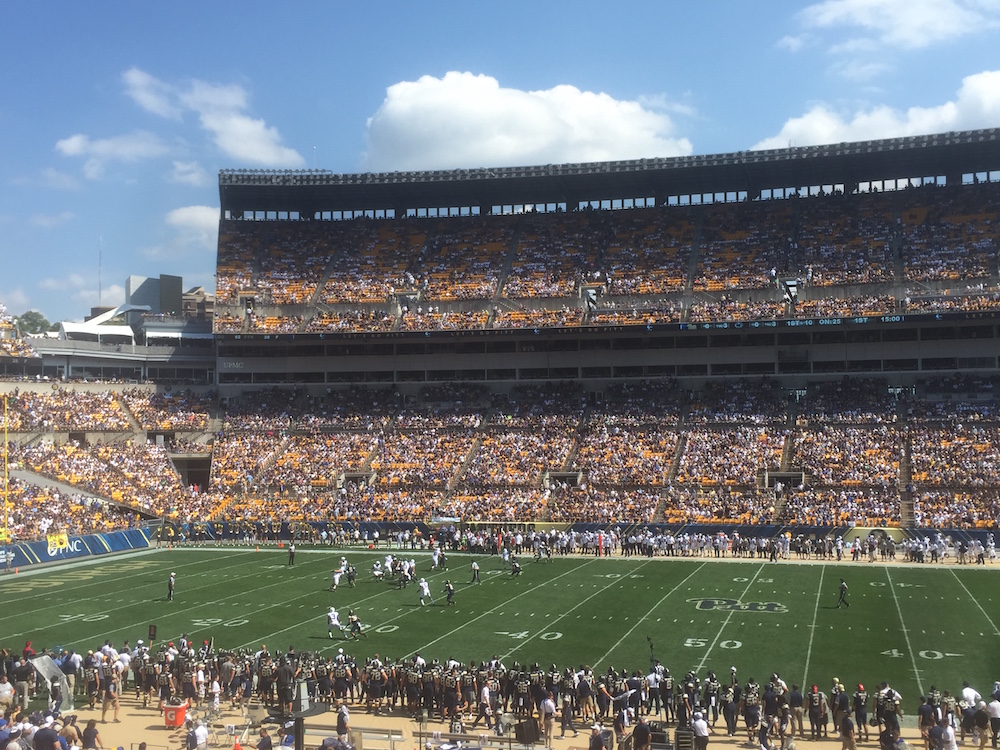

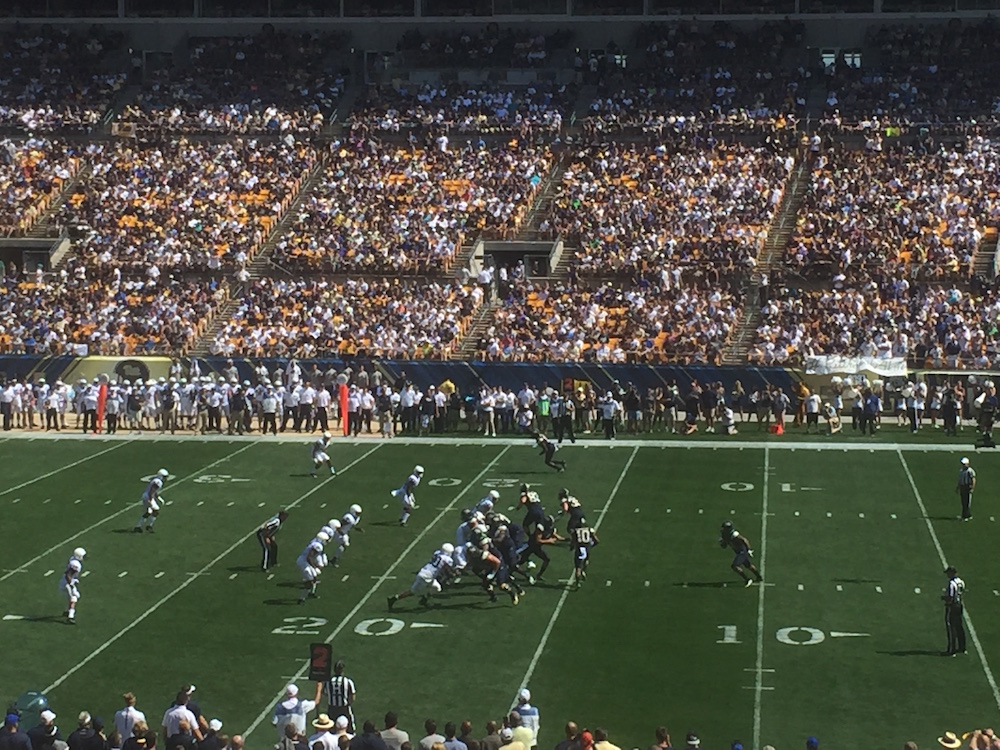
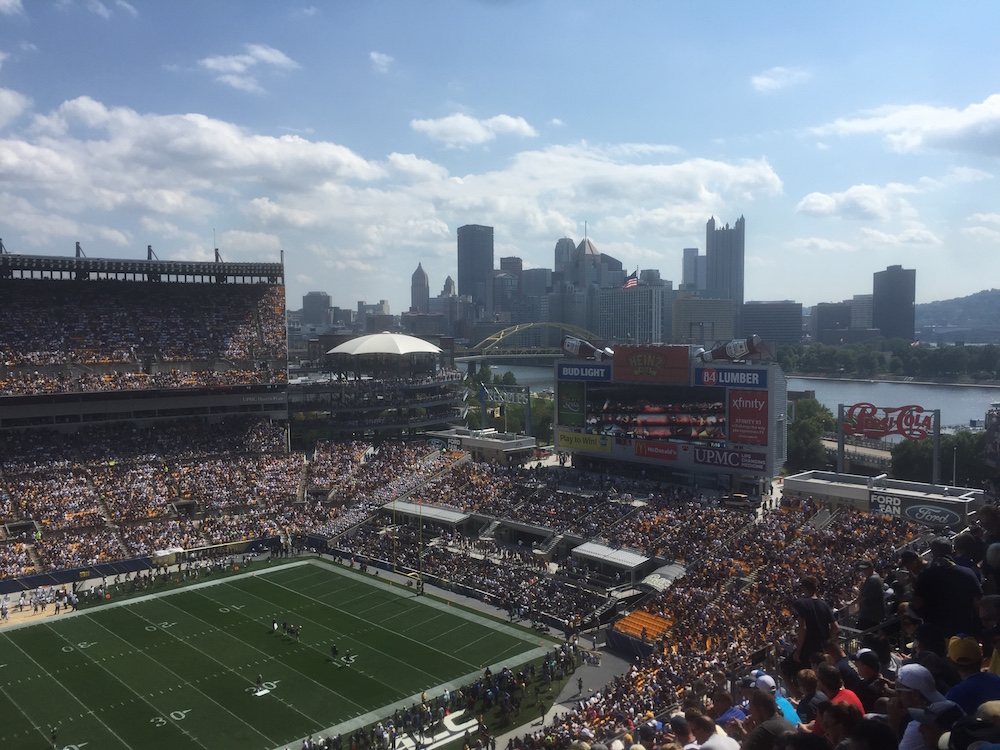
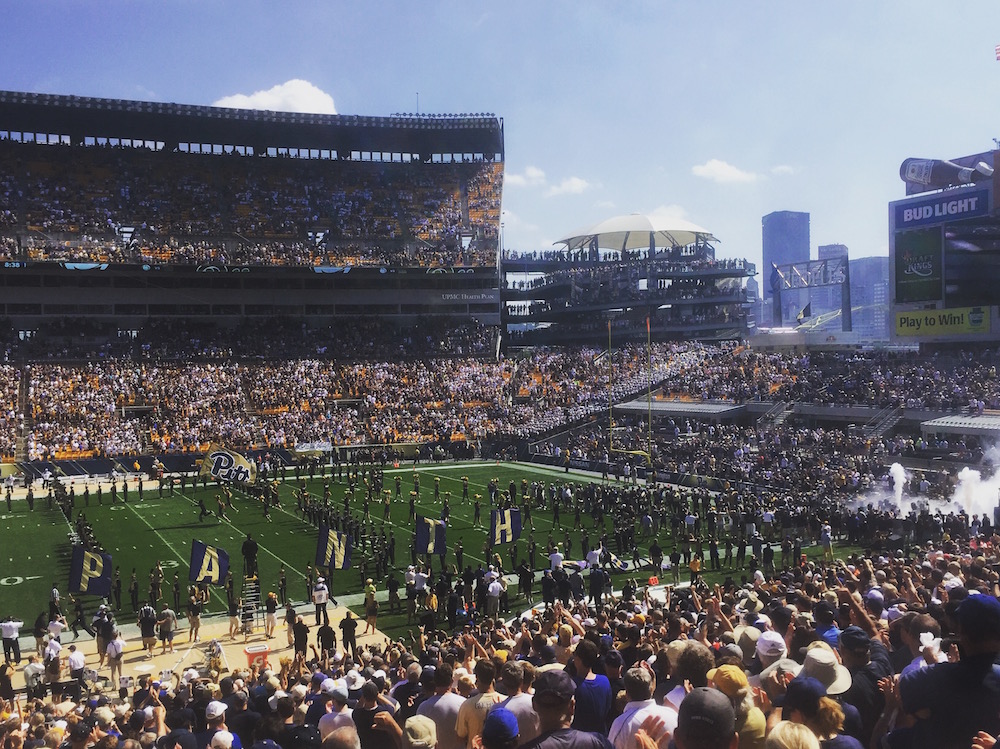

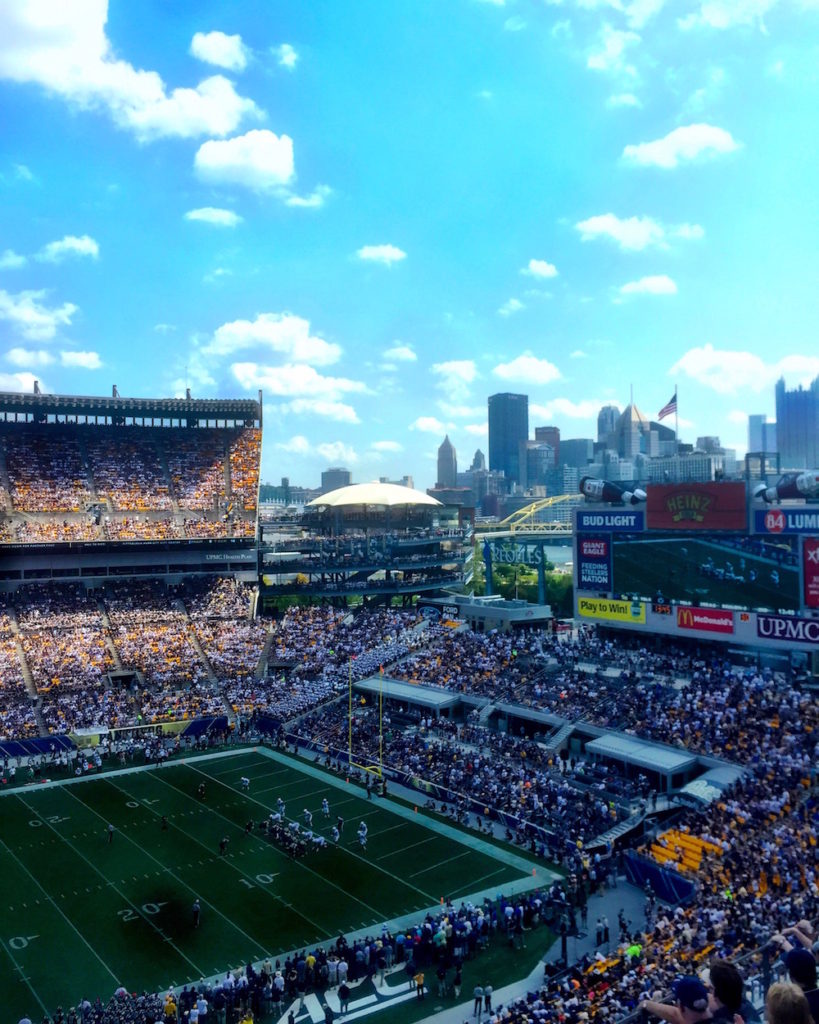
In the end, Pitt was a pleasant surprise. Those familiar with these adventures already know my general venom towards college teams that play in NFL Stadiums, as well as my broader distaste for constrictive urban campuses. But for some reason, Pitt feels different. The city felt alive on gameday. Sidewalks and parking lots were full, the game fervor palpable in the air, not merely a Saturday afternoon preamble to the real game on Sunday. Heinz field is a truly shared venue, and the Panthers are indeed part of the stadium, not a second rate tenant like some other college teams that play in NFL venues. Their insignia and logos are embossed throughout the architecture with nearly equal status as the Steelers, not hung up on cheap vinyl banners to be torn down after each contest. As far as urban college games go, one could do a lot worse than spending a sunny Saturday afternoon in Heinz Field, clutching a frosty Yuengling while overlooking the magnificent backdrop of the Ohio River and the industrial bones of the Pittsburgh skyline beyond.
